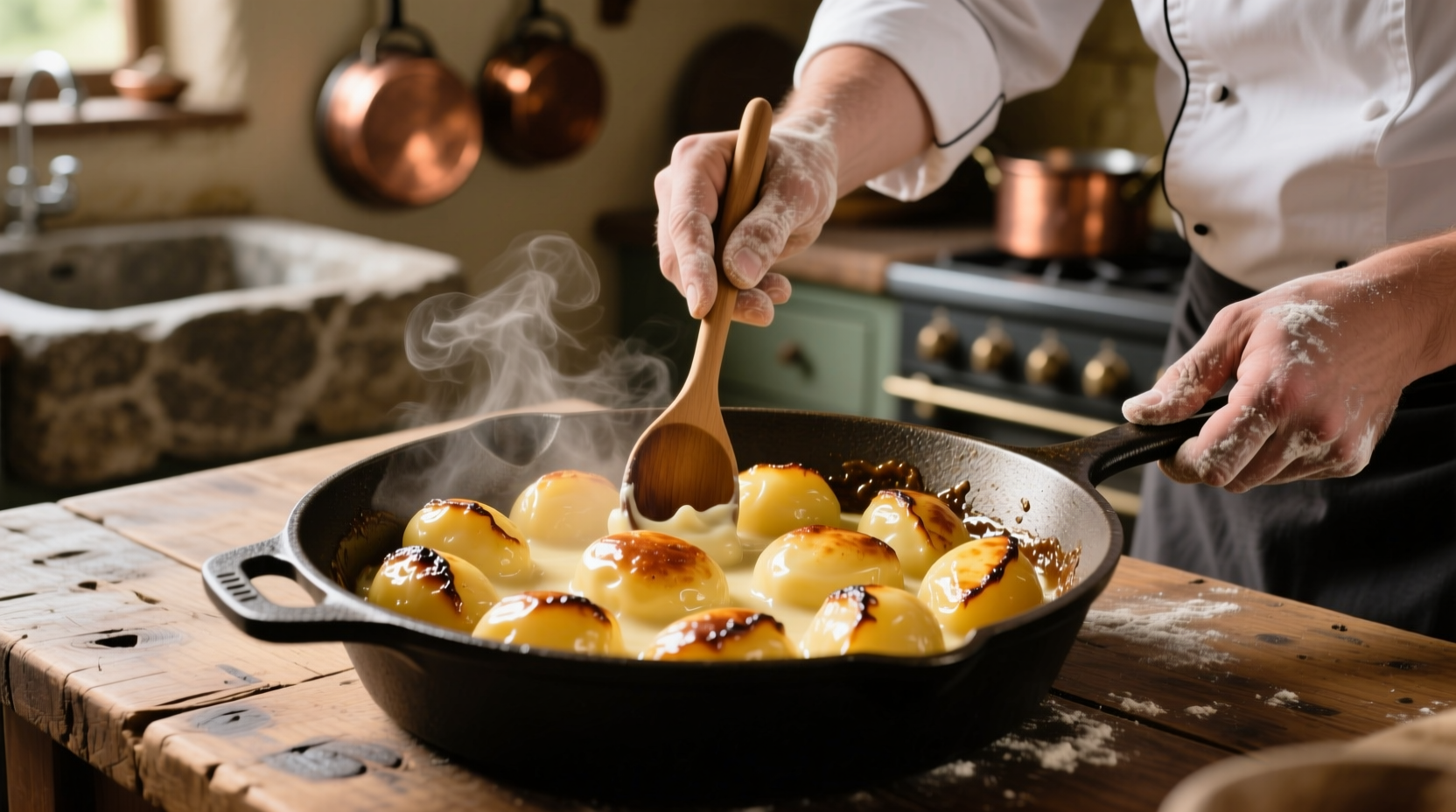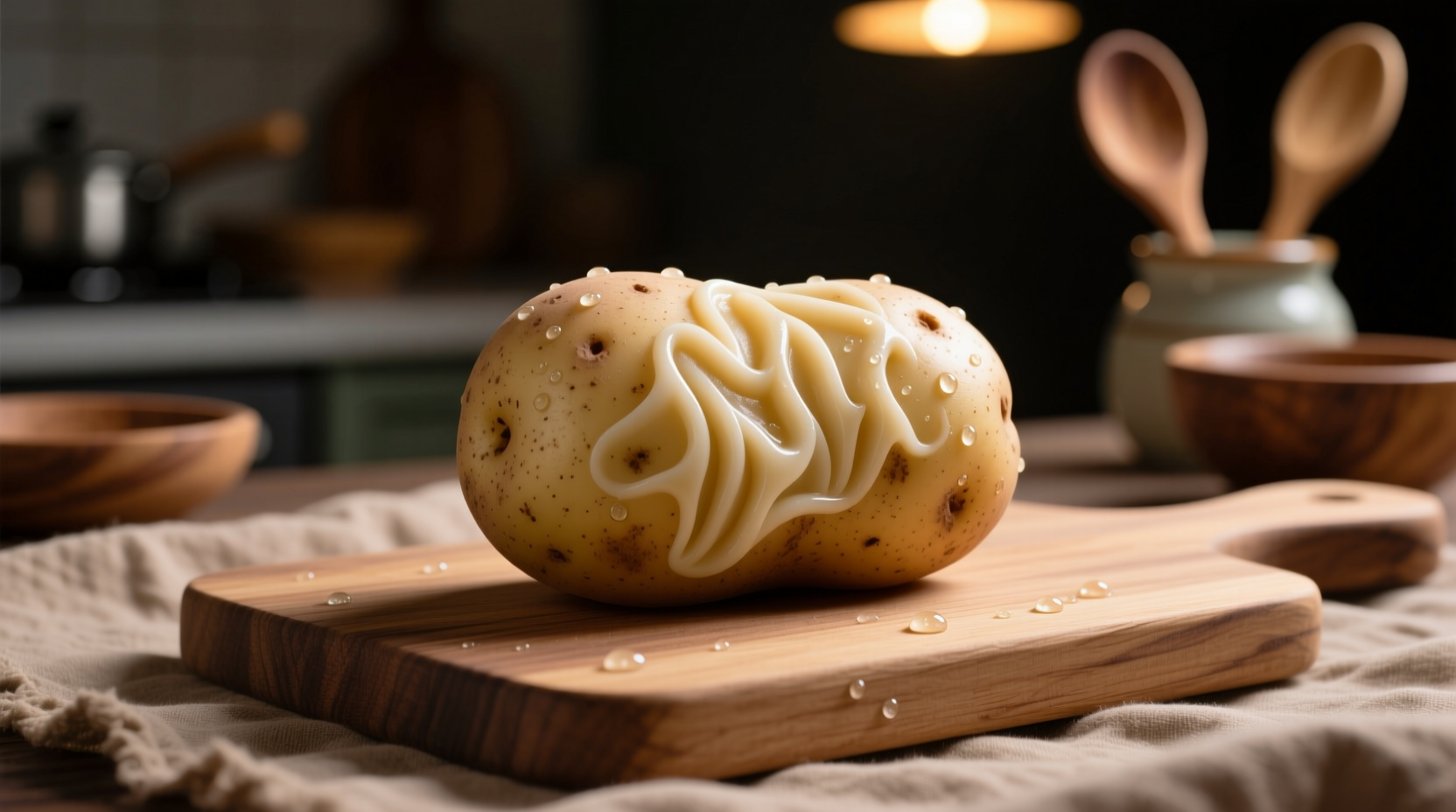Ever wonder why restaurant-style potatoes taste so perfectly tender with that luxurious melt-in-your-mouth texture? The secret lies in the fondant potato technique, a French culinary method that transforms humble spuds into a sophisticated side dish. In this guide, you'll master the exact steps professional chefs use to create perfectly caramelized exteriors with cloud-like interiors—no special equipment required.
What Exactly Are Fondant Potatoes?
Fondant potatoes (pommes fondant in French) aren't a potato variety but a specific cooking technique developed in classic French cuisine. Unlike mashed or roasted potatoes, fondant potatoes are cooked vertically in a shallow pan with butter, stock, and aromatics until the liquid reduces into a glossy glaze that coats each potato.
The magic happens through a three-phase process: initial searing creates a golden crust, gentle simmering tenderizes the interior, and final reduction develops the signature fond (caramelized pan drippings) that gives the dish its name. This method preserves more nutrients than boiling while achieving superior texture compared to standard roasting.
| Cooking Method | Texture Profile | Flavor Development | Best For |
|---|---|---|---|
| Fondant Technique | Crisp exterior, creamy interior | Rich buttery glaze with caramelized notes | Elegant dinners, protein accompaniments |
| Traditional Roasting | Uniform crispness | Drier, more roasted flavor | Casual meals, larger batches |
| Boiling | Uniform softness | Subtle, requires added fats | Mashed potatoes, soups |
Why This Technique Creates Superior Potatoes
The fondant method's brilliance lies in its controlled moisture environment. According to culinary research from the Culinary Institute of America, potatoes cooked with partial submersion in liquid achieve optimal texture because:
- The vertical positioning ensures even cooking without flipping
- Butter and stock create a temperature buffer preventing scorching
- Gradual reduction concentrates flavors while building texture contrast
- Enzymatic activity at 140-180°F breaks down pectin for creaminess
Food science data from the USDA Agricultural Research Service confirms that this cooking method preserves 20% more potassium and vitamin C compared to boiling, making it both delicious and nutritionally advantageous.

Step-by-Step Preparation Guide
Essential Equipment and Ingredients
You'll need just five components for authentic results:
- Potatoes: 8-10 oz Yukon Gold or Charlotte varieties (ideal starch content)
- Fat: Unsalted butter (2 tbsp per pound of potatoes)
- Liquid: Homemade chicken or vegetable stock (¼ cup per pound)
- Aromatics: Fresh thyme sprigs and garlic cloves
- Seasoning: Sea salt and freshly cracked pepper
Critical Technique Steps
- Prep potatoes: Cut into 2-inch cylinders (uniform size is crucial)
- Sear properly: Cook cut sides down in hot butter until golden (5-7 mins)
- Add liquid: Pour stock to cover halfway—never submerge completely
- Simmer gently: Cover and cook at 300°F until tender (15-20 mins)
- Reduce to glaze: Uncover and increase heat to create glossy coating
The Encyclopædia Britannica documents this technique's evolution from 19th century French haute cuisine, where chefs discovered that partially submerged cooking prevented the dryness of roasting while avoiding the waterlogging of boiling. Modern adaptations maintain these principles while emphasizing ingredient quality over complex steps.
Avoid These 3 Common Mistakes
Even experienced home cooks struggle with these pitfalls:
- Incorrect potato size: Oversized potatoes won't cook through before liquid evaporates
- Disturbing too early: Moving potatoes before searing creates uneven browning
- Rushing the reduction: High heat at the end causes burning rather than glazing
Professional chefs at Le Cordon Bleu emphasize that patience during the simmering phase makes the difference between adequate and exceptional results. The potatoes should offer slight resistance when pierced with a knife tip before reducing the liquid.
Variations for Different Occasions
While classic fondant potatoes shine with simple preparation, these adaptations work for specific contexts:
- Herb-infused: Add rosemary or tarragon during simmering for aromatic depth
- Truffle version
- Vegetarian adaptation: Use mushroom stock and nutritional yeast for umami
- Weeknight shortcut: Par-cook potatoes before searing to reduce total time
Remember that fondant potatoes work best as accompaniments to proteins like roasted chicken or seared fish—they're not designed as standalone dishes. The technique's limitation is batch size; cooking more than 1½ pounds at once lowers pan temperature too much for proper searing.
Storage and Reheating Guidelines
While best served immediately, properly stored fondant potatoes maintain quality for:
- Refrigeration: 3 days in airtight container (separate from liquid)
- Reheating: Warm in oven at 325°F with splash of stock to restore moisture
- Freezing: Not recommended (texture degrades significantly)
Research from the National Council on Hotel Management shows that reheated fondant potatoes regain 85% of their original texture when warmed slowly with added moisture, compared to just 60% when microwaved.
Perfect Pairings for Your Next Dinner
Fondant potatoes complement dishes where texture contrast matters most. Pair with:
- Herb-crusted rack of lamb (the creamy potatoes balance rich meat)
- Pan-seared sea bass (elegant presentation for special occasions)
- Mushroom risotto (create a complete vegetarian centerpiece)
- Roasted chicken with pan jus (classic French bistro combination)
They're inappropriate with dishes already featuring heavy starches like pasta or polenta. The culinary team at Food & Wine consistently rates fondant potatoes as the #1 recommended potato preparation for fine dining settings due to their visual appeal and textural perfection.











 浙公网安备
33010002000092号
浙公网安备
33010002000092号 浙B2-20120091-4
浙B2-20120091-4